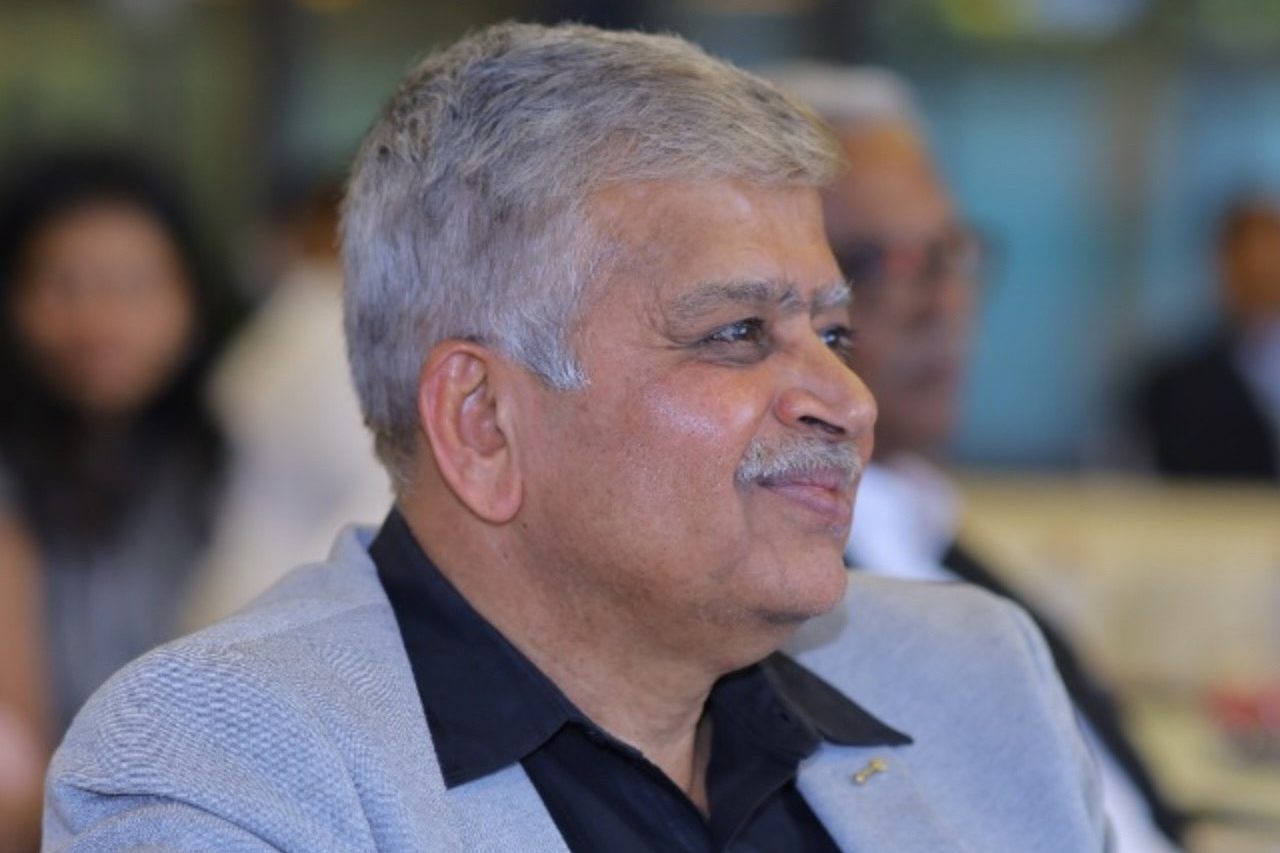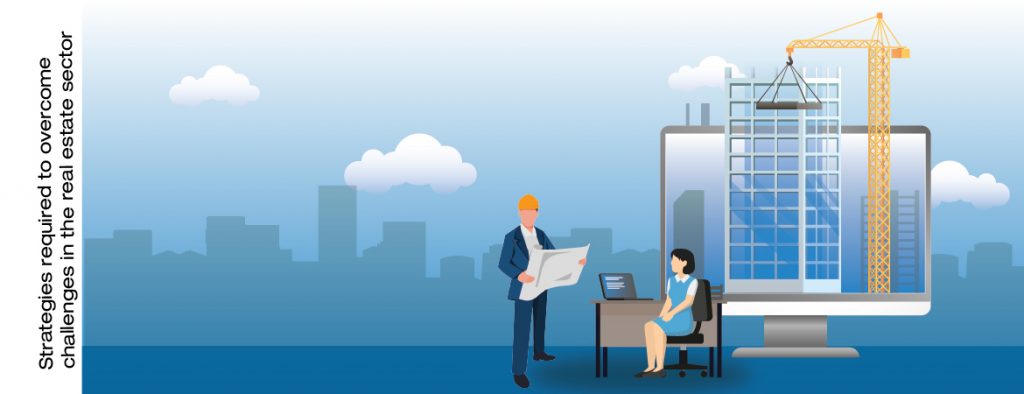
Q1. Could you please share with us your journey as a civil engineer in the real estate industry? How did you transition from working with Government departments to the private sector?
A: I embarked on my professional career in the 1980s by joining the Government, which was the primary avenue at the time. I began my journey in the P&T department, which eventually evolved into DOT and then BSNL. Back then, in the absence of private sector competition as we see today, the Government bore the significant responsibility of providing essential infrastructure, ensuring telephone connectivity to even the remotest corners of India.
The prospect of meeting this challenge head-on was immensely exhilarating. My responsibilities encompassed the construction of Telephone exchanges, Microwave towers, and Residential quarters in both urban and rural locales. The demand for telephony services was staggering, resulting in extensive waiting lists and a substantial backlog. This, in turn, amplified the pressure to deliver efficiently and promptly. Throughout this phase, I had the privilege of facilitating widespread development, including land acquisition, surveys, feasibility reports, estimates, work orders, and successful execution – a period that stands out as the most thrilling in my career.
I relished the opportunity to traverse rural landscapes, interacting with diverse populations, and gaining insight into their cultures and lifestyles. This exposure significantly bolstered my life skills, which later proved instrumental in surmounting subsequent challenges. Key to my success were attributes such as a commitment to continuous learning, a methodical approach, adept project management, effective communication, and seamless coordination. As privatisation and globalisation gained momentum, the private sector assumed a more dominant role, resulting in reduced funds and opportunities within the public sector. Sensing this shift, I made the pivotal decision to transition to the private sector.
To equip myself for this new trajectory, I completed Post Graduate Diploma in Operations Management, thereby acquiring a multifaceted skill set tailored to the private sector’s demands. This decision led me to secure a senior role in a realty company, effectively opening the door to more expansive opportunities. While the core technical skills of a Civil Engineer remained pertinent, the addition of refined soft skills, managerial acumen, and leadership attributes propelled me into a senior role – a phase of my career that I hold in high regard and will forever cherish.
Q2. With an extensive experience spanning over four decades in the construction industry, how have you witnessed the evolution of civil engineering during this time, and what significant trends have you discerned within the field?
A: Over the course of its evolution, the Construction Industry has undergone noteworthy changes. A compelling illustration is the transformation of concrete mixing techniques – progressing from manual mixing to machine mixing with manual loading, then hopper loading, and further advancing to volumetric and batch mixing. This evolution culminated in the game-changing innovation of Ready Mix concreting, revolutionising the entire concrete landscape. This pivotal development commercialised the industry and attracted major players, including substantial industrial conglomerates, to partake in this realm. The enduring prevalence of current concrete design mixes has undeniably played a pivotal role in the nation’s progress and development.
This transformative process has propelled rapid urbanisation and substantial infrastructure development, spanning railways, dams, power sectors, highways, manufacturing, and the automobile industry. Consequently, the realty sector has soared to new heights, with developers contributing significantly to housing provisions across India, addressing the ever-growing housing needs of our expanding population. Remarkably, the Construction Industry stands as the second-largest employer in India, and it has experienced remarkable growth over the past two decades, characterised by monumental projects marked by scale, speed, and size.
Revolutionary construction technologies have further accelerated this progress, encompassing elements such as Aluminium Shuttering material, Captive Ready Mix Concrete plants, Tower cranes, an array of excavators ranging from heavy to light equipment, Material Hoists, and an extensive array of tools and techniques aimed at enhancing finishing quality and speed. Coupled with this, the implementation of effective Project Management practices, along with the adoption of Project Management tools and ERP systems, has driven efficiency and effectiveness to new heights.
The industry has also attracted professionals from top-tier Engineering and Management institutions, both domestically and internationally, thereby propelling the realty sector into an elevated sphere. This transformation has given rise to a new generation of entrepreneurs, infusing the industry with best practices that boost productivity, professionalism, financial investment, and transparency in transactions. The result has been the creation of offerings that cater adeptly to the ever-evolving expectations of customers.
Furthermore, the inclusion of women in various roles, spanning managerial, leadership, and board representation, has added a dynamic and progressive dimension to the sector. The advent of the Real Estate Regulation Act (RERA) has reshaped the business landscape, transitioning it from a perception of opacity to one of transparency and openness. This change has driven realty companies to prioritize customer satisfaction, fundamentally transforming their organisational ethos.
The tangible results of these transformations are evident in the presence of numerous realty companies listed on stock exchanges. Notably, the sector has become a magnet for renowned conglomerates such as TATA, Godrej, and Mahindras, amplifying competition and intensifying the landscape’s dynamism. Collectively, the realty sector emerges as a compelling and invigorating sphere to engage with.
Adding yet another layer of vibrancy to the realty landscape are the innovative ventures initiated by the next generation of entrepreneurs. These startups have been instrumental in introducing novel concepts, products, services, and digitalisation, thereby contributing substantively to the ever-evolving industry landscape.
Q3. Your tenure with Neptune Group and Patel Realty India involved overseeing diverse projects, ranging from IT parks and affordable housing units to malls and villas. Could you share insights into one particularly challenging project you led, along with the strategies you employed to surmount those challenges?
A: My time at Neptune Group holds a special place in my memories, as it marked my initial foray into the private sector. The company, helmed by young and ambitious entrepreneurs, was poised for substantial growth. Notably, Neptune Group made waves by acquiring strategic land parcels in crucial locations. I joined the organisation at a juncture when they were focused on scaling up operations and fostering professionalism.
Having transitioned from a structured government sector, I embraced the myriad challenges as opportunities, particularly since I was entrusted with leading the Engineering function. Swiftly initiating action, I introduced a business model tailored for developers and implemented novel systems and processes. Organisational restructuring was undertaken, a fresh project team was recruited and assembled, and a culture of enhanced productivity and professionalism was infused throughout the organisation. The introduction of SAP instigated a much-needed systemic transformation.
The most formidable endeavour proved to be the IT Park project, notable for its substantial footprint and prime location. Numerous challenges emerged, including the unexpected presence of hard rock, which prolonged the completion of two basements. Navigating statutory compliance and addressing local community resistance posed additional hurdles. A pivotal strategy involved cultivating a robust network of consultants and contractors, fostering seamless coordination and collaboration, which significantly contributed to the project’s triumph.
In essence, my tenure at Neptune Group epitomised overcoming challenges through innovative strategies, organisational dynamism, and strategic partnerships – a chapter of my career that continues to inspire.
Q4. Among your significant achievements, managing the development of a 65-acre integrated enclave that encompassed both value housing and luxury apartments stands out. Could you elaborate on the distinctive challenges you encountered while overseeing this project and share how you ensured its successful fruition?
A: The prospect of engaging in a large-scale project had always captivated me, and this opportunity provided the perfect avenue to delve into such endeavours. Drawing upon my prior experiences in the government sector and Neptune Group, I was entrusted with the leadership of this ambitious initiative. The project materialised as a greenfield venture, marking Brigade Group’s inaugural foray into value housing.
Embracing the journey from ‘Concept to Completion’ amplified the thrill of the undertaking. The project was meticulously structured into three phases, encompassing both value housing and luxury segments, totalling over 3000 units. A particularly intricate challenge presented itself during the boundary securing process, where we deftly navigated resistance from local stakeholders by implementing innovative strategies, despite our legal rights. The planning phase proved equally captivating, as we explored diverse avenues to ensure project completion while adopting cutting-edge technologies.
Project management tools and techniques were skilfully introduced, fostering a dynamic team comprised of seasoned professionals and young talents, including a significant presence of graduate engineers and women. The integration of contemporary management practices ushered in a blend of proven methods and novel approaches, culminating in the implementation of successful strategies and the adoption of progressive techniques.
A triumvirate of challenges emerged – managing the project’s sheer scale, rapid pace, and expansive scope. Pioneering in-house construction practices, a first in the company’s history, provided newfound flexibility and cost advantages. Empowered teams were pivotal, driving decision-making momentum and cultivating a sense of engagement and participation that greatly contributed to the project’s triumph.
Incorporating environmentally friendly measures, the project boasted commendable waste reduction strategies, with an ethos of “reduce, reuse, and recycle” embraced by the team, resulting in minimal wastage. The unique thrill of delivering completed homes to an extensive customer base introduced novel challenges and exhilaration, unprecedented in earlier endeavours.
Collectively, witnessing the emergence of a vibrant and content community within these expansive townships evoked immense gratification and pride.
Q5. You played a pivotal role in devising a ‘Business Model for Developers’ that garnered approval from senior management and proved effective in guiding the execution of multiple projects. Could you provide a comprehensive overview of the essential components of this model and explain how it contributed to the triumphant outcome of various endeavours?
A: The formulation of a Business Model for Developers within realty companies is a crucial framework that outlines how a business intends to structure its operations to deliver its value proposition effectively. This model is pivotal in setting the stage for the business to establish a pricing strategy that aligns with the value it provides, ensuring sustainable financial viability and ongoing operations.
Numerous adaptable models are available, with the choice contingent upon the company’s Vision, Mission, and organisational structure. These options typically include:
1. Outsourcing the execution of projects to external contractors.
2. Employing a backward integration strategy to execute tasks in-house.
3. Adopting a hybrid approach where certain tasks are outsourced while others are managed internally.
Each of these scenarios underwent thorough scrutiny, complete with comprehensive cost-benefit analysis. This rigorous examination culminated in robust discussions, resulting in a well-founded and compelling proposal. The success of any venture hinges significantly on the adept adoption and implementation of this business model.
Ultimately, the hybrid model emerged as the preferred choice. This strategic selection subsequently evolved into an enduring company policy, guiding the execution of numerous projects with resounding success. This testament underscores the pivotal role played by a meticulously crafted Business Model for Developers in steering the trajectory of projects towards triumphant completion.
Q6. Over the years, your projects have garnered prestigious awards such as the NDTV Property Award and the CNBC Awaaz Award. What, in your opinion, distinguishes your projects and positions them as industry standouts?
A: Affordable housing initiatives offer a distinctive opportunity for the burgeoning middle class to fulfill their homeownership aspirations. Large-scale affordable housing projects are made feasible by substantial land holdings, favourable governmental policies, and incentives, allowing prominent developers to take the lead.
The art of leading, managing, and executing such expansive endeavours is a realm mastered by experienced developers, and Brigade stands out as a trailblazer in crafting sizable integrated enclaves. These ambitious enclaves become iconic landmarks, fostering robust communities that thrive amidst carefully curated amenities tailored to modern lifestyles.
In the competitive arena of affordable housing accolades, it’s only natural for seasoned companies and market leaders like Brigade, with their track record of successful project completions, to earn the well-deserved recognition. The commendations bestowed are a testament to the adept guidance of the Management Leadership and the collective contributions of a seasoned team, which together propel these projects to unparalleled success.
Q7. The construction industry has continually evolved by surmounting diverse challenges across various phases and timeframes. An inherent hallmark of this industry lies in its intricate web of regulations and approvals, a facet that necessitates adept navigation through layers of official processes.
As the sector has matured over time, it has adeptly confronted execution challenges in a VUCA (Volatile, Uncertain, Complex, and Ambiguous) environment. The realm of real estate, intertwined with construction projects, introduces an array of risks encompassing market fluctuations, financing complexities, regulatory delays, construction timelines, cost escalations, quality assurance, environmental considerations, contractual disputes, health and safety hazards, and economic downturns.
To effectively mitigate these risks, real estate enterprises must execute comprehensive due diligence, formulate robust risk management strategies, foster transparent and open lines of communication, and embrace adaptability to swiftly respond to dynamic circumstances.
The construction industry has consistently leveraged lessons from past experiences to construct a suite of risk mitigation tactics, a testament to the vigilance of management and leadership teams. A resolute commitment to surmount challenges is ingrained within the industry’s DNA, guiding a relentless pursuit of goals while adeptly navigating impediments.
Problem-solving and decision-making are integral tenets of the realty sector’s ethos, constituting essential survival skills. Given these factors, real estate companies have honed their prowess in risk mitigation and problem-solving, fortifying their success within this dynamic domain.
Q8. During your tenure as Vice President – Contracts and Administration at Patel Realty India, you spearheaded the creation of a comprehensive C2C (Concept to Completion) manual tailored for the realty sector. Could you share insights into the pivotal components covered within this manual and elaborate on the positive impact it had on the industry?
A: Patel Realty, a nascent entity branching off from the esteemed Patel Engineering, embarked on its journey with a reservoir of experience from the Infrastructure domain spanning over six decades. Given the fledgling state of systems and processes, coupled with my expertise in Operations, the opportunity to devise solutions and tackle prevalent industry challenges was invigorating. I’ve always embraced challenges as fertile ground for opportunity.
At the helm of a sprawling 120-acre integrated enclave, a substantial mixed-use development, the pressing need to standardise procedures for seamless workflow within sizeable teams became apparent. This prompted the inception of the C2C (Concept to Completion) manual, a comprehensive compendium of reports and formats. This tool was meticulously crafted to facilitate the pragmatic execution of projects by our Project teams.
Encompassing a spectrum of formats, the manual spanned the gamut from Land acquisition and preparatory works for project initiation, including various surveys such as site surveys, contour surveys, and geological investigations. It further detailed workflows across pre-construction, construction, completion, and closure phases, meticulously addressing quality and safety considerations. The compilation’s robustness garnered commendation from management quarters, serving as a beacon of transparency and furnishing vital insights to pertinent stakeholders.
In sum, the creation of the C2C manual not only enriched Patel Realty’s operational framework but also contributed positively to the industry at large, epitomising the profound impact that streamlined and comprehensive documentation can wield in fostering effective project execution.
Q9. With extensive experience spanning both residential and commercial projects, what advice would you offer to aspiring civil engineers seeking to establish their presence in the real estate and construction sector?
A: I’ve had the privilege of collaborating with young, aspiring, and astute engineers who exhibit an eagerness to learn, adapt, and contribute to the dynamic realty sector. In my view, academic curricula should evolve in tandem with the rapidly changing industry landscape. It’s crucial for students to glean practical insights into construction, enhancing their ability to navigate the work environment effectively.
Builders and developers invest substantial time and effort in training graduate engineers before their deployment on-site. Understanding the skills and attributes required across different project life cycle stages and corporate functions is pivotal. This comprehension, contextualised appropriately, sets the stage for a gratifying and fruitful career.
Key components for aspiring engineers’ success include a robust technical expertise in their domain, a solid foundation in fundamental civil engineering principles, adept project management skills, the early development of managerial and leadership capabilities, a commitment to continuous learning as a growth catalyst, proficiency in soft skills such as communication, coordination, decision-making, and problem-solving.
Moreover, aspiring engineers should master data handling at each stage, proficiently craft dynamic reports and dashboards, hone presentation skills, and adapt to technological advancements and digital tools that are reshaping the industry’s landscape. Adapting to evolving work expectations is essential for sustained success.
The journey of a civil engineer is demanding, both mentally and physically. Cultivating a disciplined and focused approach is paramount. Maintain an open mindset to seize every learning opportunity, continuously elevate your skill set, and prioritize physical well-being. Striking a harmonious work-life balance is crucial; while excelling in the workplace is vital, nurturing personal and familial connections remains equally significant.
Q10. Finally, looking back at your incredible career, what is the most fulfilling aspect of being a civil engineer, and what legacy do you hope to leave behind in the construction industry?
Reflecting on my remarkable four-decade journey as a Civil Engineer, an overwhelming sense of fulfilment engulfs me. I firmly believe that Civil Engineering offers an expansive canvas for innovative problem-solving, an avenue to craft solutions for the diverse challenges that present themselves daily. The prospect of shepherding projects from inception to completion perpetually invigorates me, an unceasing cycle of embarking on fresh endeavours brimming with hope and excitement.
At the core, a Civil Engineer’s odyssey parallels the adage, “A journey of a thousand miles begins with a single step.” From the instant land is procured, the architect’s vision takes root, triggering a process of transformation from blueprints to tangible reality. The role encapsulates continuous evolution, with each project a novel chapter brimming with unique challenges and triumphs. The culmination of a project fosters a surge of accomplishment, invoking nostalgia as the memory lane unravels, recounting the journey’s trials and jubilant moments.
The tapestry of my career, woven through various stages, continues to unfold as a testament to ceaseless learning. Each project, distinct in design, scope, and audience, propels me to collaborate with fresh locales, novel teams, and varied objectives. This trajectory, from a Junior Engineer in the government realm to Senior Vice President of Projects at Brigade Group, stands as a testament to the rewards of unwavering effort. It encapsulates a wellspring of gratification, having contributed substantively to the industry’s evolution.
The repository of acquired learnings, honed skills, managerial acumen, and cultivated leadership responsibilities evoke profound contentment. The boundless transformation brought forth by construction technology underscores the industry’s pivotal role in nurturing employment and opportunities for a burgeoning population. What better privilege than to partake in this noble endeavour of nation-building, leaving an indelible mark on the industry’s legacy.







 Allow notifications
Allow notifications
